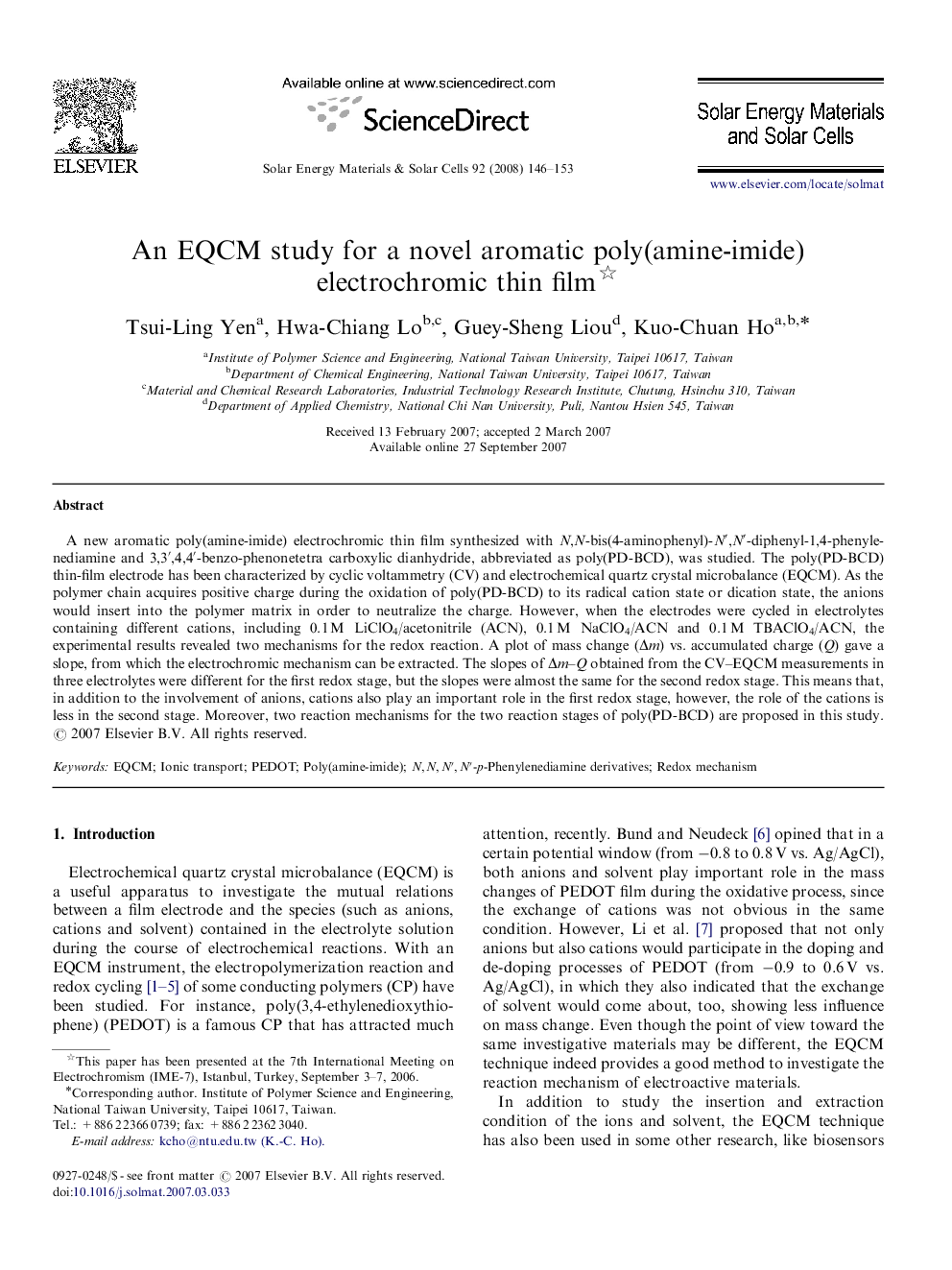| Article ID | Journal | Published Year | Pages | File Type |
|---|---|---|---|---|
| 81015 | Solar Energy Materials and Solar Cells | 2008 | 8 Pages |
A new aromatic poly(amine-imide) electrochromic thin film synthesized with N,N-bis(4-aminophenyl)-N′,N′-diphenyl-1,4-phenylenediamine and 3,3′,4,4′-benzo-phenonetetra carboxylic dianhydride, abbreviated as poly(PD-BCD), was studied. The poly(PD-BCD) thin-film electrode has been characterized by cyclic voltammetry (CV) and electrochemical quartz crystal microbalance (EQCM). As the polymer chain acquires positive charge during the oxidation of poly(PD-BCD) to its radical cation state or dication state, the anions would insert into the polymer matrix in order to neutralize the charge. However, when the electrodes were cycled in electrolytes containing different cations, including 0.1 M LiClO4/acetonitrile (ACN), 0.1 M NaClO4/ACN and 0.1 M TBAClO4/ACN, the experimental results revealed two mechanisms for the redox reaction. A plot of mass change (Δm) vs. accumulated charge (Q) gave a slope, from which the electrochromic mechanism can be extracted. The slopes of Δm–Q obtained from the CV–EQCM measurements in three electrolytes were different for the first redox stage, but the slopes were almost the same for the second redox stage. This means that, in addition to the involvement of anions, cations also play an important role in the first redox stage, however, the role of the cations is less in the second stage. Moreover, two reaction mechanisms for the two reaction stages of poly(PD-BCD) are proposed in this study.
